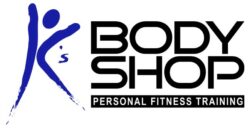Personal Trainers and Strength & Conditioning Coaches are constantly trying to come up with more effective training programs and in doing so, frequently lose sight of the basics. Some of the key questions when designing programs is how many sets and reps of which exercises are optimal to get the desired results for each individual athlete or client. The answer depends on many factors, including the goals, abilities, and training experience of the individual. This article will focus on the BASICS of resistance training program design and attempt to answer how many sets and reps are needed to achieve different training goals.

How Many Reps?
It depends on your primary goal.
Muscle Endurance
If muscle endurance is your primary goal, you will be lifting lighter weights for more repetitions, with relatively short rest periods between exercises or sets. This is typically used with beginners or post-rehab clients as a means of adaptation for connective tissues and muscles, motor learning of the correct exercise technique, and athletes in off-season as a means of active recovery. Exercises are typically done in sets of 15 or more reps, are primarily aerobic in nature, and do little to improve strength.
Maximal Strength & Power
Training with heavy weights for 1-5 repetitions is best for maximal strength and power without much gain in muscle mass. More rest is needed between exercises or sets (typically 3-8 minutes) because of the high neural drive required and to replenish the ATP-PCR energy system. Most recreational lifters aren’t going here, since the majority are more interested in building muscle mass for cosmetic purposes rather than athletic competition.
Hypertrophy
This is the most popular reason for recreational lifters to lift weights – building muscle mass. If you want BIG muscles, you’re going to be lifting 6-15 reps per set, with rest periods ranging from 30 seconds to 3 minutes depending on the situation. Manipulation of neural drive as well as the amount of time a muscle is under tension will give the best results, so periodization can be very helpful. For example, 10-15 reps for 3 weeks followed by 3 weeks of 8-12 reps followed by a week of 6-8 reps, etc. Ladies, don’t worry – this is also how to “tone”. In order to actually get big requires lots of volume (number of exercises in addition to sets and reps).
How Many Sets?
This is probably the biggest gray area when it comes to designing strength training programs, and I usually handle it based on the weight lifting experience of the individual. A beginner will be starting with just one set for the first month or so, then progressing to 2 or 3 sets over the next 6 months. Why? To avoid overtraining, particularly to tendons and ligaments which adapt to strength stimulus at a slower rate than muscle tissue. Most folks are completely happy with no more than 3 sets simply because of the amount of time they are willing to commit to their program. For athletes and highly experienced lifters who want more muscle mass, it is not uncommon to go to 6 or more sets depending on the goal. Keep in mind, more is not necessarily better and frequently results in overtraining.
These are just a few of the many variables that need to be taken in to consideration when designing an effective strength training program. Understanding neural factors, endocrinology, which metabolic energy system is being stressed, the goals and current abilities of the athlete or client all play a critical role in program design. If you are interested in learning more about how many sets and reps would be most effective in helping you achieve your goals, call today and we’ll get you started!
